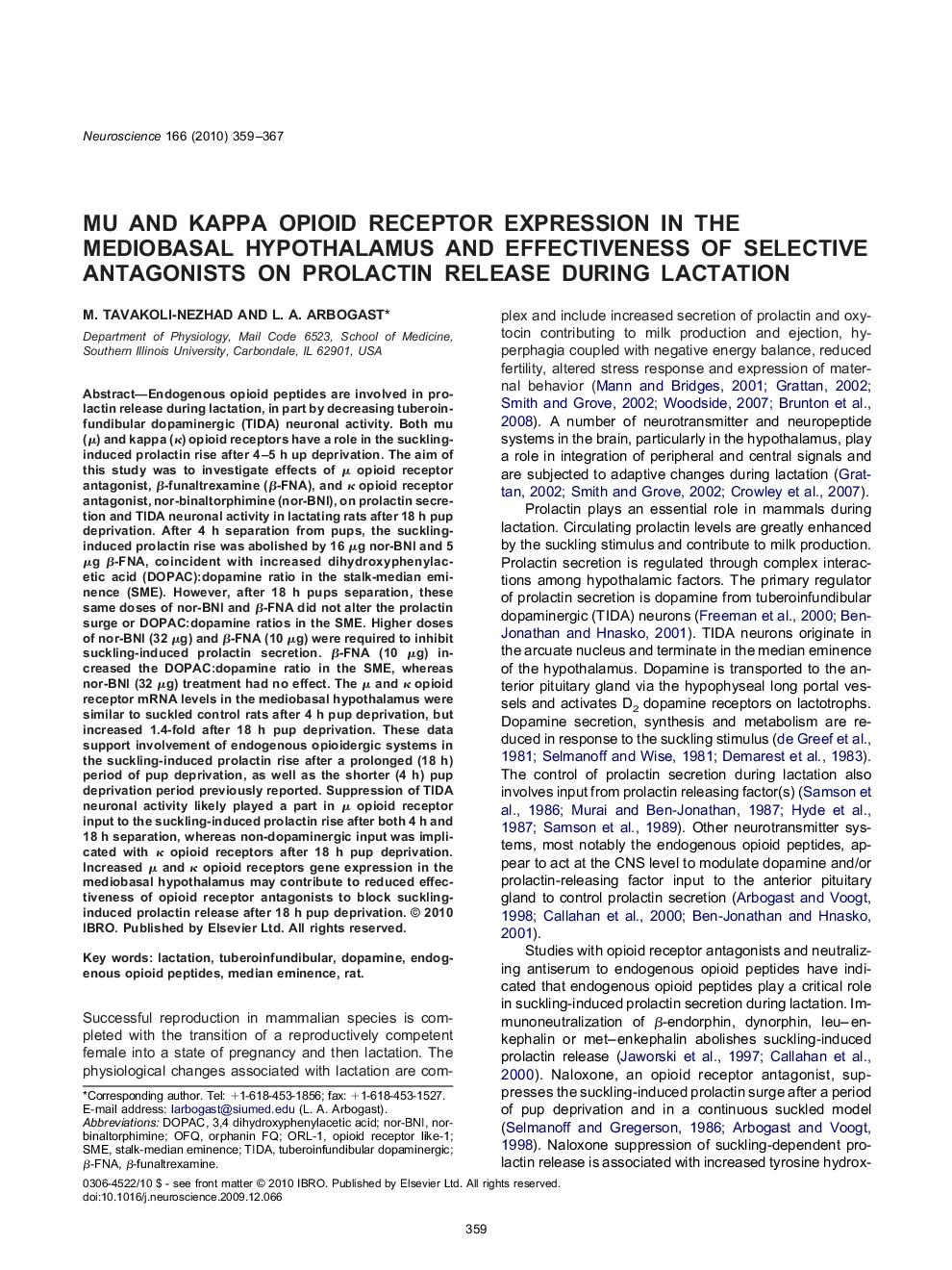| کد مقاله | کد نشریه | سال انتشار | مقاله انگلیسی | نسخه تمام متن |
|---|---|---|---|---|
| 4339647 | 1295763 | 2010 | 9 صفحه PDF | دانلود رایگان |

Endogenous opioid peptides are involved in prolactin release during lactation, in part by decreasing tuberoinfundibular dopaminergic (TIDA) neuronal activity. Both mu (μ) and kappa (κ) opioid receptors have a role in the suckling-induced prolactin rise after 4–5 h up deprivation. The aim of this study was to investigate effects of μ opioid receptor antagonist, β-funaltrexamine (β-FNA), and κ opioid receptor antagonist, nor-binaltorphimine (nor-BNI), on prolactin secretion and TIDA neuronal activity in lactating rats after 18 h pup deprivation. After 4 h separation from pups, the suckling-induced prolactin rise was abolished by 16 μg nor-BNI and 5 μg β-FNA, coincident with increased dihydroxyphenylacetic acid (DOPAC):dopamine ratio in the stalk-median eminence (SME). However, after 18 h pups separation, these same doses of nor-BNI and β-FNA did not alter the prolactin surge or DOPAC:dopamine ratios in the SME. Higher doses of nor-BNI (32 μg) and β-FNA (10 μg) were required to inhibit suckling-induced prolactin secretion. β-FNA (10 μg) increased the DOPAC:dopamine ratio in the SME, whereas nor-BNI (32 μg) treatment had no effect. The μ and κ opioid receptor mRNA levels in the mediobasal hypothalamus were similar to suckled control rats after 4 h pup deprivation, but increased 1.4-fold after 18 h pup deprivation. These data support involvement of endogenous opioidergic systems in the suckling-induced prolactin rise after a prolonged (18 h) period of pup deprivation, as well as the shorter (4 h) pup deprivation period previously reported. Suppression of TIDA neuronal activity likely played a part in μ opioid receptor input to the suckling-induced prolactin rise after both 4 h and 18 h separation, whereas non-dopaminergic input was implicated with κ opioid receptors after 18 h pup deprivation. Increased μ and κ opioid receptors gene expression in the mediobasal hypothalamus may contribute to reduced effectiveness of opioid receptor antagonists to block suckling-induced prolactin release after 18 h pup deprivation.
Journal: Neuroscience - Volume 166, Issue 2, 17 March 2010, Pages 359–367